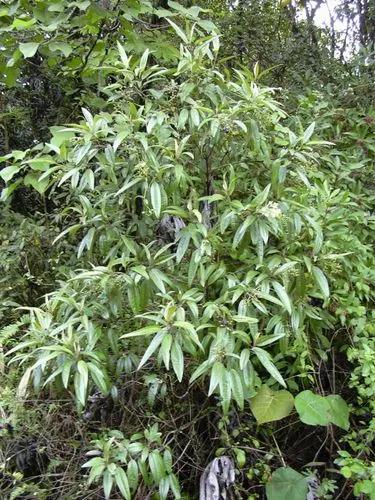Cotinus obovatus syn. C. americanus, the American smoketree, chittamwood or American smokewood, is a rare species of flowering plant in the genus Cotinus of the family Anacardiaceae, native to Oklahoma, Texas, Arkansas, Missouri, Alabama and Tennessee. It is a deciduous, conical shrub growing to 10 m (33 ft) tall by 8 m (26 ft) broad, with oval leaves up to 12 cm (5 in) long. It produces panicles of pink-grey flowers in summer, and its foliage turns a brilliant scarlet in autumn; considered by many to be the most intense fall color of any tree.
American Smoketree Care
Cotinus Obovatus



Cotinus obovatus, commonly called American smoketree, is a small, deciduous, rounded, Missouri native tree or large, upright shrub typically growing 20-30' tall and occurring on limestone glades, rocky limestone bluffs and bald knobs in the area of the White River in southeast Missouri. Smoketree gets its common name not from the 6-10" flower clusters (tiny, insignificant, dioecious, yellowish-green flowers) which bloom in June, but from the billowy hairs (attached to elongated stalks on the spent flower clusters) which turn a smoky pink to purplish pink in summer, thus covering the tree with fluffy, hazy, smoke-like puffs. Bluish green leaves are, as the species name suggests, obovate. Foliage turns a variety of colors in the fall (including yellow, red, orange and reddish purple), and produces some of the best fall color of any of the native American trees and shrubs. Genus name comes from the Greek word kotinus meaning olive. Specific epithet means egg-shaped with the broadest end uppermost.Native to rocky, usually mountain soils from Kentucky, Tennessee, and northern Alabama west to Oklahoma, with disjunct populations in a few counties of central Texas, Cotinus obovatus is an outstanding small, ornamental tree. Its bark is decorative, its leaves are soothing blue-green in spring and summer and flaming oranges and reds in fall, and its flowers form ethereal clouds of pink and purple in spring. The floral panicles wave in the breeze, giving the illusion of clouds of smoke. It is drought-tolerant, disease-resistant, well-adapted to the stony soils of its native habitat, and should not be over-watered or over-fertilized.
How to Care for the Plant

Popularity

137 people already have this plant 15 people have added this plant to their wishlists
Discover more plants with the list below
Popular articles






